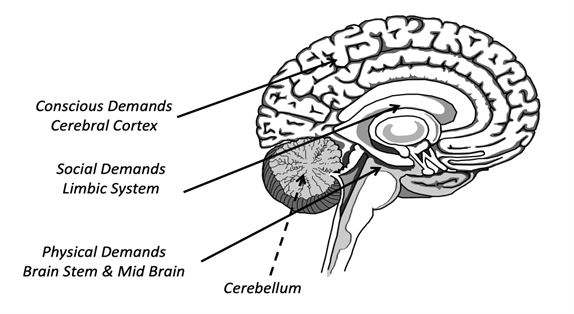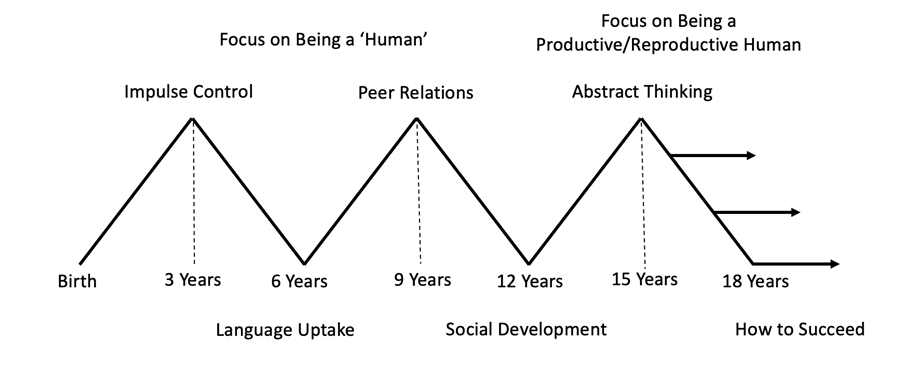The Purpose of Education
Just what is the purpose of the work we do in our classrooms? This is a critical question for all teachers; what do we want our students to achieve? The answer to this question is really complex when you apply it to well-adjusted students but becomes much more difficult when applied to those who have been subjected to abuse and/or neglect; those students who are the focus of our work.
If you search for definitions of ‘the purpose of education’ you will find comments like ‘being there to give us knowledge of our place in the world, and the skills to work in it’ or ‘for acquiring knowledge and skills that will enable people to develop their full potential, and become successful members of society’. Even the NSW Department declares that educations prepares “our learners for rewarding lives as engaged citizens in a complex and dynamic society”.
These views represent a rationalist’s goals for education, that is they consider the purpose of education to be a tool to equip children to become successful members of society. We consider this to be the secondary purpose, it won’t surprise anyone who has followed our work that we believe the primary purpose is to develop a functioning adult, a characteristic that all children have to develop but one that is extremely challenging for those on which our work focuses.
We understand that children are not little adults, in fact of all the animal kingdom our infants are the most dependent. Our task is to develop the maturity that a functioning adult requires. Of all the species humans have the most complex brain, where learning how to behave takes place. But unlike our cousins our brain takes so much longer to develop to maturity. The illustration below shows the stages of the brain’s development. The process can be described as the development occurs from bottom-up and from back to front.
The bottom-up refers to the development of the different stages of our three-part or triune brain. That is we have evolved to have three levels starting with the brain stem and mid brain which is in control of our physical needs. This is often referred to as the reptilian brain as it regulates the functions that all animals need but are the only ones reptiles use.

The second stage of development is the limbic system where behaviours are learned that will facilitate the satisfaction of our social needs. The evolution of this social brain is shared with other animal species that have exploited the benefits of working in groups. The final part of the brain and the part that distinguishes us from the rest of the animal kingdom is our cerebral cortex, our thinking brain. The behaviours we need to thrive in our physical, social and intellectual environments are controlled in these areas and are learned in a sequential pattern, from the bottom-up!
The brain also develops from the back to the front. The second illustration shows the periods of development. The quantity of blue indicates the completed development of each area. This back to front development is not so much about survival but the development of the tools the brain uses to examine and interpret the environment.

These represent the lobes of the brain illustrated below:

These have the following basic functions:
- Occipital Lobe – this is where our vision is controlled, it allows us to interpret the stimulus coming from our eyes
- Parietal Lobes – the main function of this part of the brain is to interpret our sense of touch
- Temporal Lobes – This area of the brain allows us to process and understand sounds
- Frontal Lobes – this is the last to be developed and manages the skills know as executive functions. Unlike the other lobes this is the area where we plan and solve
problems. Significantly, this may be the most important part of the brain when it comes to school but it is the last to be developed.
The descriptions above are very crude in the sense that the brain is the most complex object in the universe but it does illustrate its progressive development. Because the tools for behaving are mastered gradually over a period of time. This is critical for teachers to understand.
The next illustration shows the stages of the development of the behaviours:

Depending on the stage in which you teach there will be an overriding drive in your students to develop certain skills. For the school years peer relations and social development are the main ‘learning tasks’ for the child’s brain.
We began this essay discussing the purpose of education and the ‘motherhood’ statements like the purpose of education is for “our learners for rewarding lives as engaged citizens in a complex and dynamic society”. This, like most vision statements underpinned by the rationalists approach to all organisational pursuits results in a ‘truism’ that is so broad it is almost meaningless.
The unfortunate reality in our modern schools is that the focus from early childhood until matriculation is about learning the ‘measurables’, the ‘outcomes’. The system demands improvement in those areas that are facilitated by the functions in the frontal lobes and the cerebral cortex the last part of the brain to mature.
I understand all the brain is developing all the time it is just at a different rate and there are specific ‘windows of opportunity’ when the brain’s own environment is altered to provide an excess of myaline, the material that supports new neural pathways, that protect new memories and behaviours. If we want to capitalize on this process then we have to provide the conditions that cultivate that specific learning.
However, when we are dealing with those students who missed out on these conditions at the time they were required, those whose primary care-givers failed to provide, they will be in a state of need in these areas. If the students are unable to satisfy the needs in their physical or social environment then the resulting stress will necessitate the brain to focus on addressing these deficits. This comes at the expense of the high-order demands schools place on their students. Teachers who understand this provide the social, or physical conditions where this is not a problem.
Therefore two considerations must be taken into account when structuring learning tasks:
- The need to understand abstract ideas is not a human priority. Physical and social survival are much more powerful drives and must be satisfied before cognitive learning can take place.
- Learning in modern curriculum is cognitive and requires the use of specific neural networks. These networks are only available when physical and social needs are satisfied.
Even for the well-adjusted children, teaching all students cognitive tasks is a challenge because that area of the brain remains incomplete until the mid-twenties. However, because of their strong sense of self these kids cope. Unfortunately, those kids who do not have that same confidence or more tragically the kids who have suffered significant brain damage (see Newsletters 28 Physical Damage from Early Childhood Abuse - 06 November 2017 and Newsletter 59 – The Impact from Neglect - 12 September 2017) find this cognitive immaturity an added burden. Their disability is not easily recognised by any other than those teachers who understand the complexity of engaging the underdeveloped, damaged brain!